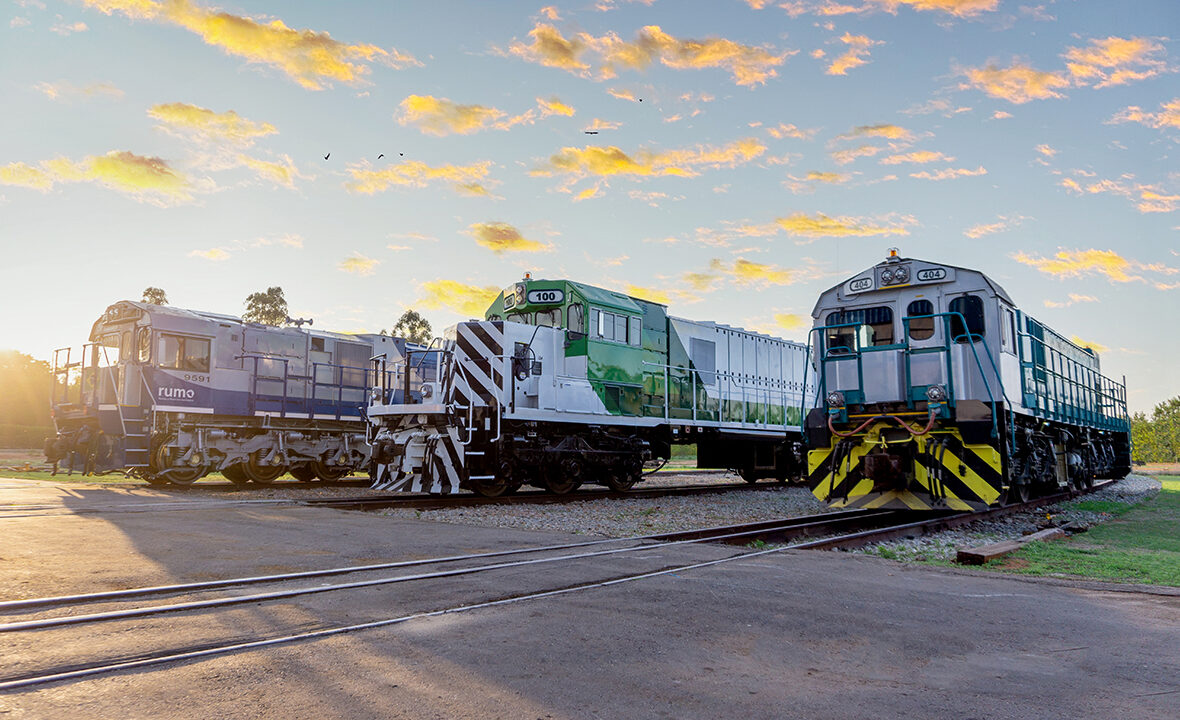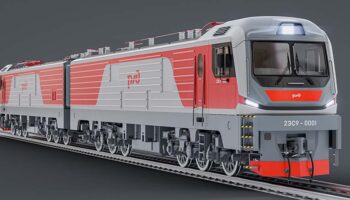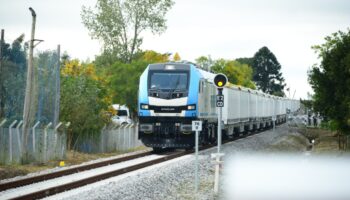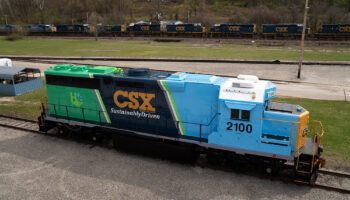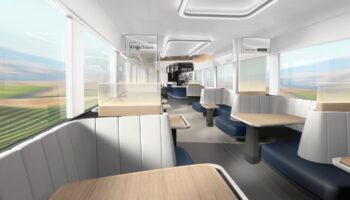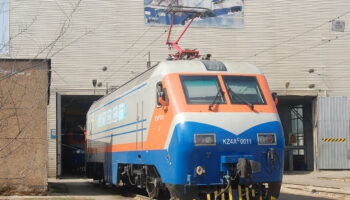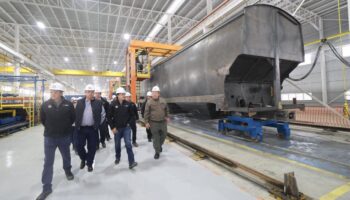US: Major American manufacturers are working on several series of locomotives which due to alternative traction systems are expected to reduce significantly emissions compared to conventional diesel traction. The Railway Age reviewed the work status of these projects in its March edition, and ROLLINGSTOCK highlighted the key moments of the feature and added more details.
Battery electric EMD Joule
The locomotive was introduced by Progress Rail a few years ago. The EMD Joule range includes 5 models with power ranges from 1,500 to 5,700 kW, maximum continuous traction force from 294 to 690 kN, battery capacities from 4 to 14.5 MWh, and the number of axles from 4 to 8 units. The SD70J-BB eight-axle locomotive boasts 14.5MWh of storage capacity, which is the largest in the market, according to the manufacturer. Progress Rail has also created its own charging system.
The first customer was the Brazilian mining company Vale, but the prototype initially had a battery capacity of 1.9 MWh. The assembly of two SD70J-BB locomotives are currently on its final leg at Progress Rail’s plant in Sete Lagoas, Brazil. Also, Fortescue Metals Group is due to receive such vehicles this year for operation on lines in the Pilbara region of Western Australia.
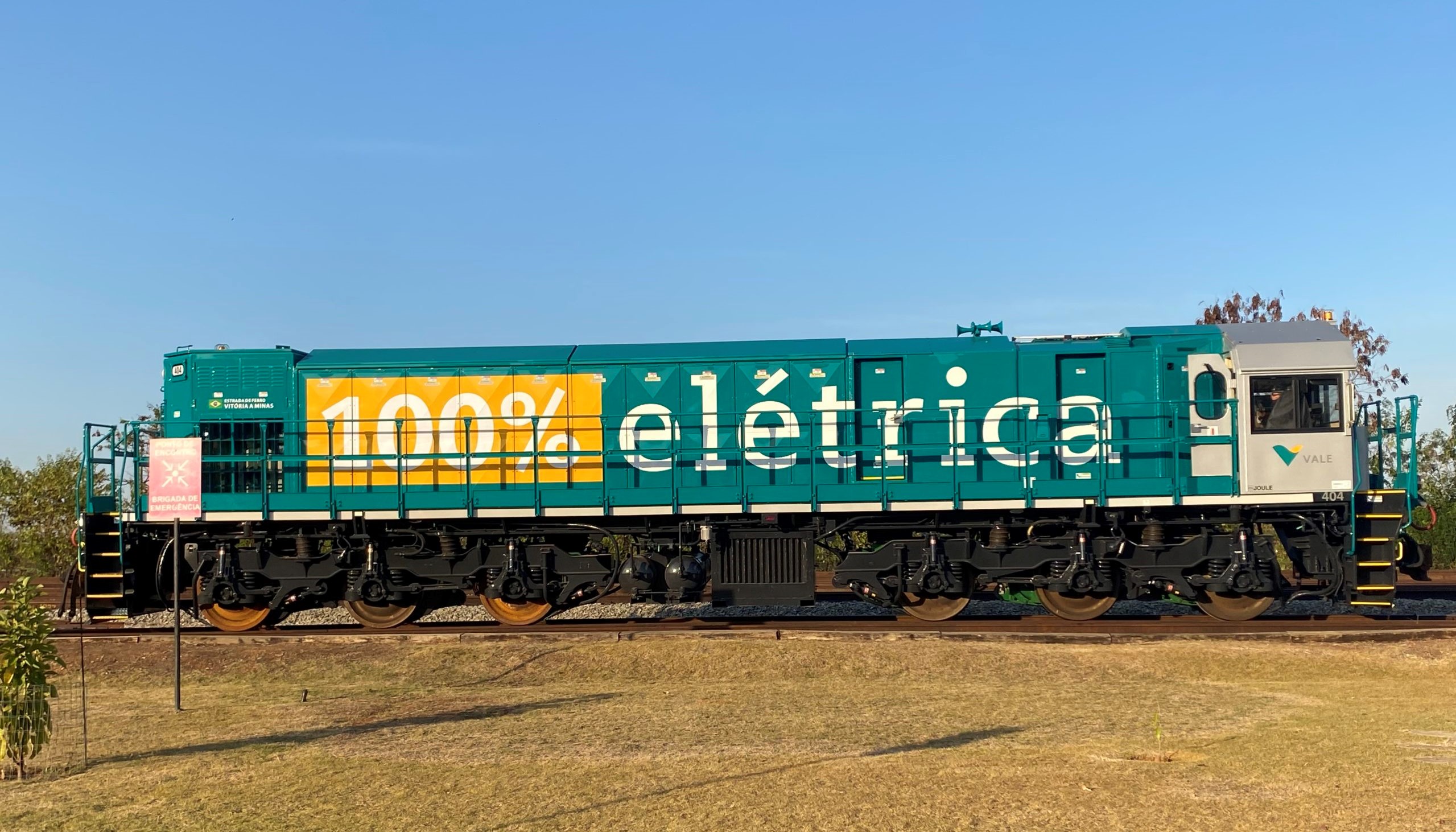 Progress Rail battery locomotive for Vale. Source: im-mining
Progress Rail battery locomotive for Vale. Source: im-mining
In addition, two SD70J-BB locomotives have been ordered for testing by another Australian mining company, BHP. According to Paul Denton, Senior Vice President of international sales at Progress Rail, testing is scheduled for early next year. It will check the regenerative braking. It assumes that energy is stored when a loaded train runs on the downhill from the mine to the port and is used to help power empty trains back to the mine. Meanwhile, another model of the SD40JR locomotive for 1,000 mm gauge and with a battery capacity of 4MWh is currently being tested at the MxV Rail centre in Pueblo, USA. It was ordered in November 2020 by the US Pacific Harbor Line, which provides shunting services on the port approach lines in California.
Hybrid GT38H
The hybrid propulsion system, which uses a combination of diesel engines and battery, is another solution from Progress Rail. Brazilian logistics and transport firm Rumo will take delivery this year of the first two locomotives of this series. Their power has not been disclosed.
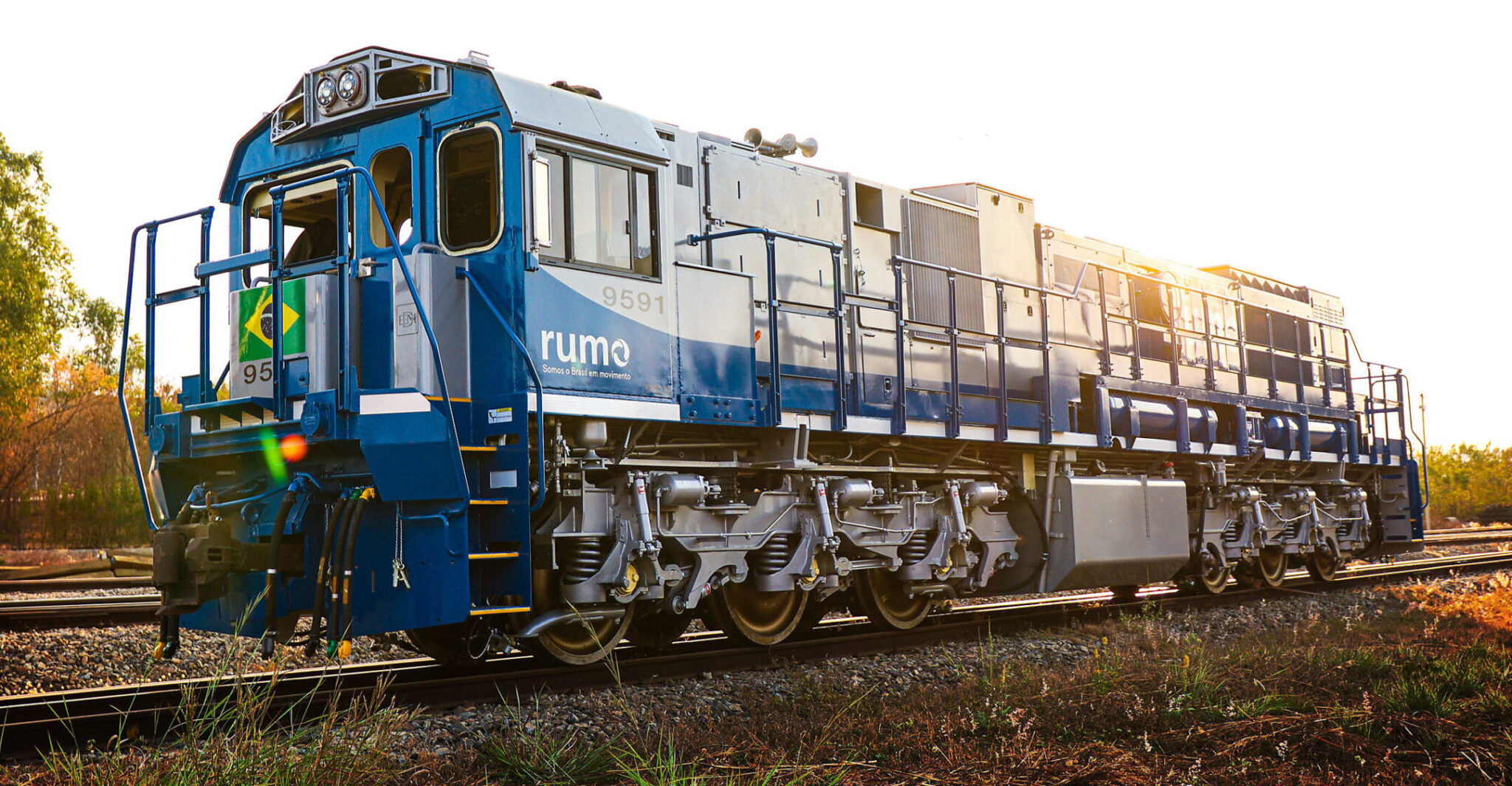 Hybrid GT38H locomotive for Rumo. Source: Progress Rail
Hybrid GT38H locomotive for Rumo. Source: Progress Rail
As Michael Cleveland, Director of Advanced Energy at Progress Rail, explained, the battery system can be supplemented by a hydrogen fuel cell. However, with an equal tank capacity, hydrogen provides only 20% of the range compared with diesel, so it would require a tender with an additional tank to support long-haul operations.
Battery electric FLXdrive
In 2020, Wabtec unveiled the FLXdrive battery locomotive project: its power is claimed to be 3,200 kW, and traction is 100% provided by energy storage units. The first order was placed by the Canadian operator CN in November 2021. Last year, orders were reported from the American Union Pacific, as well as from the Australian mining companies Rio Tinto and BHP. However, the total firm order so far is in the range of 20 vehicles. Also last year, the manufacturer signed a memorandum of understanding with Kazakhstan Temir Zholy to deliver 150 battery shunting locomotives using FLXdrive technology.
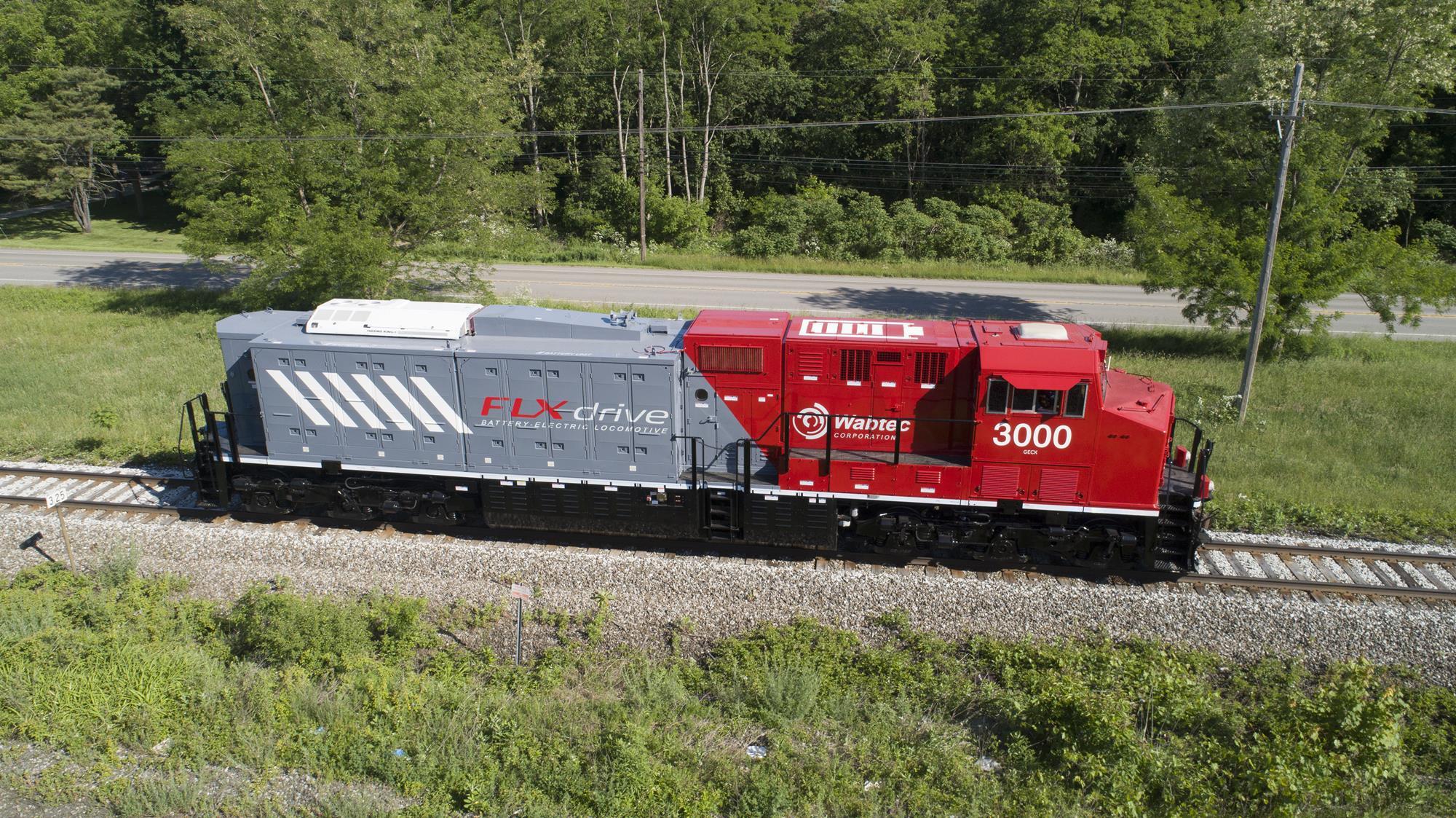 FLXdrive battery locomotive by Wabtec. Source: Wabtec
FLXdrive battery locomotive by Wabtec. Source: Wabtec
In 2020-2021, the FLXdrive with a battery capacity of 2.4 MWh was tested on the BNSF operator’s network in California on trains that also included a pair of diesel Tier 4 locomotives. According to the company, replacing one locomotive with a battery-powered FLXdrive resulted in fuel savings of 11%.
According to Wabtec Executive Vice President and Chief Technology Officer Eric Gebhardt, this was the first version of the vehicle. The second in a series of two locomotives with 7MWh battery capacity will be delivered later this year to BHP for joint testing with Progress Rail’s SD70J-BB locomotive. It is due to be followed by the FLXdrive 2.5, in which nickel-manganese-cobalt batteries will be replaced by nickel-cobalt-manganese-aluminium ones from Ultium Cells. According to Gebhardt, similar batteries are used in Hummer cars. Their capacity will be more than 8 MWh.
Other Wabtec solutions
Wabtec is also currently testing more than 40 locomotives operating with various blends of fuels. Gebhardt said to Railway Age that the company has approved up to 5% biodiesel and up to 30% hydrotreated vegetable oil (HVO) in fuel blends. However, as part of these trials, the plan is to increase the proportion of biodiesel to 20% and HVO to 100% in the next phase. In addition, Wabtec is working on increasing the efficiency of the diesel engine itself in terms of reducing fuel consumption and emissions by 5%.
Also, Wabtec is developing two projects for use of hydrogen in locomotive traction. The first concerns the development of a dual-fuel internal combustion engine, which would enable the use of a hydrogen-diesel mixture. A test-bed has already been set up in the Oak Ridge laboratory to carry out work on the project.
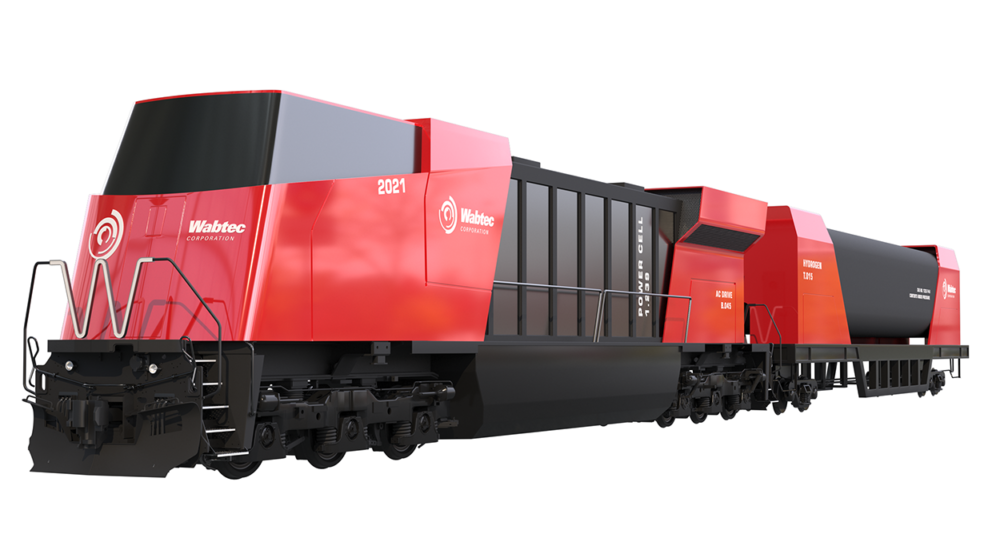 Rendering of the Wabtec hydrogen locomotive with a tender unit. Source: Railway Age
Rendering of the Wabtec hydrogen locomotive with a tender unit. Source: Railway Age
The second involves introducing hydrogen fuel cells to charge the storage units. This is implemented in conjunction with automobile manufacturer General Motors, which plans to set up production of such energy sources in the US along with Japan’s Honda. In addition, as with Progress Rail, it is planned to use a tender unit with 7,000 kg of hydrogen, equivalent in energy content to 18,900 litres of diesel.



